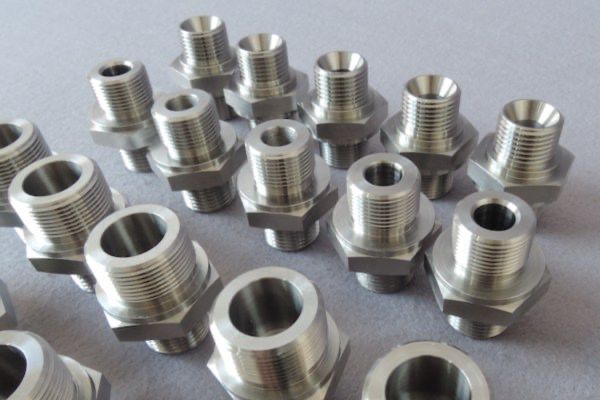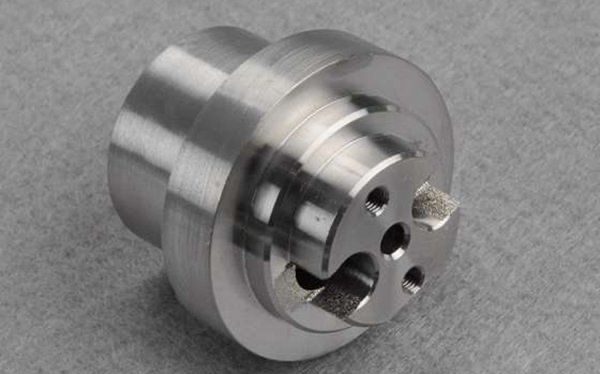Modern manufacturing demands equipment that combines flexibility, precision, and speed. Versatile turning centers, backed up with sophisticated CNC turning services and rapid manufacturing technologies, have changed the process.
These advanced machines also include; multiple spindle consolidated machines, multiple function ones, integrated manufacturing machines, adaptive control tools, and always connected and monitored manufacturing tools with quality predictive analysis.
For mass-produced auto parts, intricate aerospace components, or specialized medical equipment, modular turning centers create new standards of efficiency and flexibility for production throughout the competitive marketplace.
Multi-Spindle Lathe: Increasing Flexibility and
The integration of multi-spindle lathes in versatile turning centers has revolutionized machining by enhancing flexibility and boosting efficiency, making them a vital innovation for rapid manufacturing.
Unlike single-spindle machines, multi-spindle lathes allow multiple spindles to operate simultaneously, enabling various machining tasks to be performed on different parts of the same workpiece. This parallel processing significantly reduces cycle times and increases production rates, especially for high-volume manufacturing tasks.
Multi-spindle lathes are particularly suited for complex machining operations that involve intricate geometries or multi-step processes. These machines excel in handling components like automotive gear shafts or aerospace fittings, where precision and consistency are crucial.
Multi-Tasking Turning Centers: High-Volume Throughput in Single Setups
Multi-tasking turning centers are known to combine turning, milling, drilling, and other operations into one machine. This innovation eliminates the need for multiple machines or workpiece transfers, enabling manufacturers to achieve high-volume production with unmatched efficiency.
Multi-tasking turning centers are equipped with advanced tooling systems that handle complex operations sequentially or concurrently. For instance, they can perform roughing, finishing, and secondary machining processes on a single workpiece without repositioning. By consolidating processes, these machines reduce the need for manual or automated part transfers between workstations. This not only minimizes handling errors but also saves time, resulting in faster cycle completion.
Hybrid Manufacturing: A Versatile Solution
Hybrid manufacturing systems integrate subtractive and additive operations in modern turning centers, allowing for the production of intricate-shaped parts with fewer wasted materials. Combining CNC turning services with innovations such as laser cladding and 3D printing, these machines provide light weight, high tensile parts that are manufactured with least turnaround time.
This is especially beneficial to industries that require unique designs to be developed, small-scale production and immediate modification, including medical devices and aerospace. For example, using traditional turning processes combined with techniques such as additive manufacturing, medical manufacturing industries such as implant makers, are able to manufacture in-patient implants of high quality and precision.
Additionally, hybrid manufacturing enables rapid prototyping and ensures lower material waste, ultimately reducing production costs significantly. Prototype manufacturing is a light form of production that has unique design benefits compared to traditional manufacturing, ensuring products are innovative and meet customized industry needs efficiently.

Automated Tool Changers: Streamlining Operations
Automated tool changers (ATCs) are critical components in modern turning centers, designed to replace tools swiftly and seamlessly during machining. This automation reduces manual interventions, cuts down on machine downtime, and ensures operations proceed efficiently.
ATCs are equipped with tool magazines or turrets that store multiple tools required for different machining processes. When a tool change is initiated, the ATC uses a robotic arm or a similar mechanism to retrieve the next tool while storing the used one.
Precise Tool Positioning
Sensors and alignment systems ensure each tool is accurately positioned during the changeover. This precision prevents misalignments that could compromise the machining quality.
Seamless Integration with CNC Systems
The ATC is synchronized with the CNC system, allowing automatic identification and selection of the appropriate tool for specific machining operations. This integration enables the system to adapt dynamically to multi-step processes.
Specific Benefits and Applications
- Increased Production Rates
By reducing the time required for tool changes, ATCs significantly boost production rates, especially in industries with high-volume demands. For instance, automotive manufacturers use ATCs to streamline the production of engine components and precision gears.
- Error Reduction
ATCs minimize the risk of human errors in tool handling, ensuring consistent results across repetitive tasks. For example, electronics manufacturers rely on ATCs to produce intricate smartphone enclosures, where precision and uniformity are paramount.
- Improved Setup Efficiency
Setup times are drastically reduced as ATCs eliminate the need for manual tool alignment. This improvement is particularly valuable for industries with tight production deadlines.
- Adaptive Tooling for Diverse Projects
ATCs accommodate diverse machining requirements by allowing quick transitions between tools with varying precision levels. This capability makes CNC turning highly versatile, suitable for both complex and standard manufacturing tasks.
Integration of Internet of Things and Predictive Maintenance
The integration of the Internet of Things (IoT) and predictive maintenance has revolutionized versatile turning centers, significantly enhancing their flexibility and efficiency.
IoT-Driven Machine Connectivity
IoT enables turning centers to be interconnected within a smart manufacturing ecosystem. By embedding sensors and real-time communication systems, machines can monitor parameters such as temperature, vibration, and tool wear. These insights are transmitted to centralized systems, facilitating real-time tracking of machine performance and production processes.

Predictive Maintenance in Action
Predictive maintenance leverages data collected via IoT to predict equipment failures before they occur. Algorithms analyze trends from sensor data to forecast when specific components may require servicing or replacement. In turning centers, this prevents unexpected downtime and extends the lifespan of critical components, such as spindles and cutting tools.
By addressing potential failures proactively, predictive maintenance ensures uninterrupted operation, reducing costly machine downtime. Also, it can provide precise data on tool wear, enabling timely tool changes and maximizing tool life. In aerospace and automotive sectors, predictive maintenance prevents disruptions in high-precision machining, ensuring consistent output.
Conclusion
The advancements in versatile turning centers, such as multi-spindle lathes, automated tool changers, IoT integration, and predictive maintenance, are reshaping the manufacturing landscape. These innovations collectively enhance flexibility, reduce downtime, and improve efficiency, empowering manufacturers to meet evolving demands for precision, speed, and adaptability.







